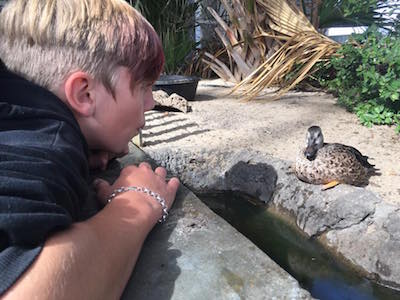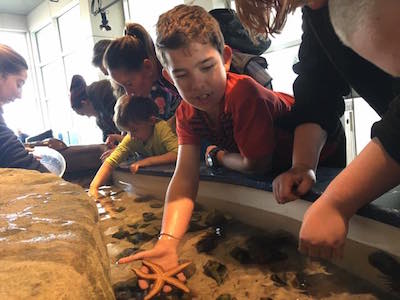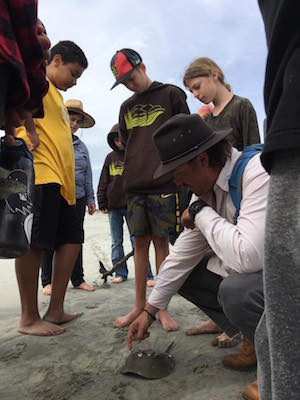The Value of Field Trips

When you think back on your school days, I would venture a guess that some of your most prominent memories involve school trips. I can barely remember my second grade teacher’s name, but I still recall in vivid detail the half day excursion we took to the police station. Unfortunately field trips are quickly becoming a thing of the past. Budget cuts force many schools to limit the number of field trips their students take each year. Our local elementary school restricts their classes to only two trips a year. That means in an academic year, students are rarely engaging with the world outside their classroom.
Understanding why Field Trips are Important
At Arthur Morgan School, we choose a different model. We recognize the value of field trips and try to get out of the classroom as often as we can. A five week long course will often include multiple field trips. That is in addition to the three outdoor trips students go on throughout the year and the 18 days field trips which occur every spring. These trips are wonderful opportunities for students to engage with the world outside their classroom. They allow for spontaneous teaching moments spurred on by our middle schoolers’ natural curiosity.
 Trips also teach important social and emotional lessons. While on a trip, students learn how to think about a group and the effects of their actions. It’s not just their school work at stake, but the whole group experience and they keenly feel that responsibility. They learn how to be flexible when plans need to change because of unforeseen obstacles like bad weather or traffic. All of these moments are opportunities for learning real skills that they will use repetitively for the rest of their lives.
Trips also teach important social and emotional lessons. While on a trip, students learn how to think about a group and the effects of their actions. It’s not just their school work at stake, but the whole group experience and they keenly feel that responsibility. They learn how to be flexible when plans need to change because of unforeseen obstacles like bad weather or traffic. All of these moments are opportunities for learning real skills that they will use repetitively for the rest of their lives.
Experiencing Coastal Ecology
This year students went to Cape Romain on an all school trip. Every student and most of our staff packed their bags and headed for the South Carolinian coast to study coastal ecology. They camped with Nature Adventure Outfitters where they were able to stay just a few yards from the intercoastal waterway. Dodging mosquitoes and watching sunrises through the trees, students were able to spend time right on the coastal area they were studying.
 Each day, the trip participated in various experiential learning activities. Coastal Expeditions took the group on a tour of Bull’s Island which is part of the Cape Romain National Wildlife Refuge. Henry Brandt, a manager at Coastal Expeditions, led them on tour of the island and shared his extensive knowledge of the island and its wildlife. The school also did service work at the wildlife refuge traveling both in kayaks and trails to clean up trash. To round out the trip, the students also visited the South Carolina Aquarium and The Center for Birds of Prey at the Avian Conservation Center .
Each day, the trip participated in various experiential learning activities. Coastal Expeditions took the group on a tour of Bull’s Island which is part of the Cape Romain National Wildlife Refuge. Henry Brandt, a manager at Coastal Expeditions, led them on tour of the island and shared his extensive knowledge of the island and its wildlife. The school also did service work at the wildlife refuge traveling both in kayaks and trails to clean up trash. To round out the trip, the students also visited the South Carolina Aquarium and The Center for Birds of Prey at the Avian Conservation Center .
Experiencing their Education
Students had a great time learning while also experiencing this special ecosystem. Rather than just reading about how environmental changes are affecting the coastline, our students actually witnessed the damage being done. They were able to talk to people who are working hard to protect the wildlife and took away a valuable understanding of the work required to keep our world thriving. Garrett, an eighth grader described the trip as “making thing up close and personal. We got to actually interact with birds and things instead of just seeing them from a distance!”
Field trips make for incredibly inspiring experiences. Our students will remember their time at Cape Romain far more than any time they spent in a classroom this year. For this reason, AMS will always make field trips a priority. They make sure the students don’t just receive an education, but experience one as well!
-by Nicholas Maldonado
